among friends
a biannual publication for the san francisco friends school community
winter 2023
pankti’s first fall at valencia street
celebrating 20 years of friends: an important celebration of our shared history at sffs
middle school spotlight:affinity groups
faculty voices: make it a game connections, quaker glossary, & more

“… You can see the connection, I am sure, to the daily commitment SFFS makes to teach and nurture our students to do the same with one another. For example, it was incredibly beautiful this week to gather on the Front Yard with the 7th-Graders, amidst the bustle of Valencia Street and behind the bougainvillea, to have Meeting for Worship together. This afternoon, I observed two young Friends communing around the peace table so they could work out a disagreement. I maintain awe for the power of listening to one’s inner voice alongside the voices of the community—this is the recipe for honoring dignity and is at the core of our educational mission.”
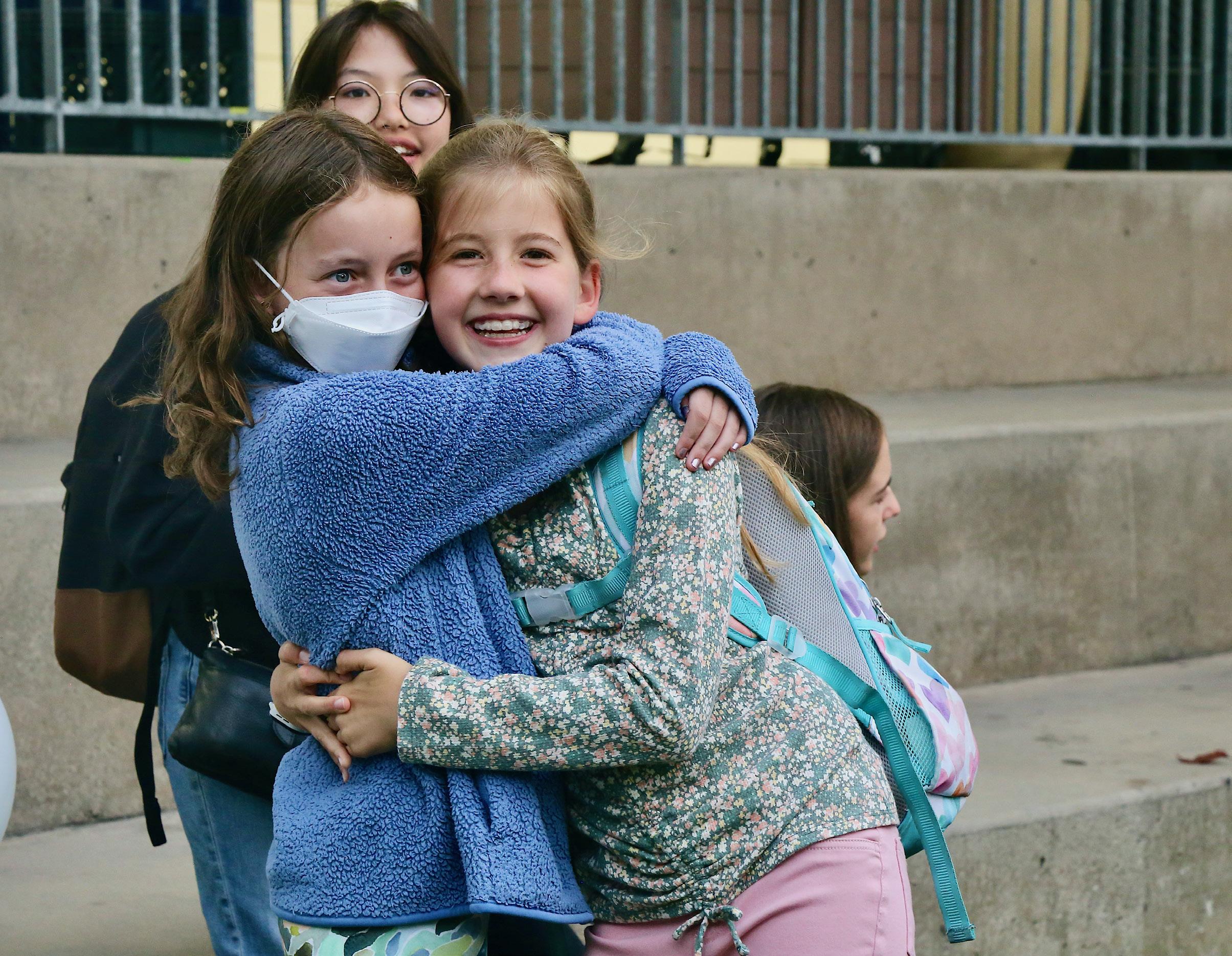
– Excerpt from a letter Pankti shared with SFFS Families this past fall
among friends: winter 2023
in this issue... celebrating friends
dear friends: pankti’s first letter as head of school! page 2
connections: what is your favorite part of our historic campus? page 4
pankti’s first fall at valencia street page 6
celebrating 20 years of friends page 8
middle school spotlight: affinity groups
page 12
faculty voices: make it a game – math at friends with amabelle sze page 15
quaker glossary: seasoning page 17
class notes page 18
photo album page 20
page 1
dear friends a letter from our head of school

Dear Friends,
This summer, as I settled into my new life and role in San Francisco and at Friends, my top priority was getting to know this community. I took as deep a dive as I could, connecting with current families, pioneer parents and founding trustees, former administrators, and my new colleagues, and everyone— down to the person—was incredibly generous with their time and their stories of SFFS. I had no idea that I would become transformed by these stories—precious pieces of history and love— myself. But with these memories and anecdotes, I have forged an early and strong connection to this place, and I’m eager to share one of these stories with you here, now.
One of our founding trustees, who was involved with the school starting in the Diamond Street days, helped to find the former Levi Strauss factory, now the site of
among friends: winter 2023
our beloved San Francisco Friends School campus. He told me that the first time the construction team examined the ground under the building, they observed—to their surprise and shock—that there was a full stream of water running beneath. The foundation was severely weathered and filled with sand and crumbling brick. Honestly, he told me, he could hardly believe that the building was even standing! The team had to work hard and think fast to pivot direction, to pour a new foundation, to make tough choices about building and time and resources and in his words, “to get through each day and this epic project together.” And so they did.
The foundation is now, I am assured, (and I know in my own bones) is SOLID. It has been reinforced, each year, by our collective dedication, our shared learning and work. Metaphorically, to me, this foundation is all of us, who inhabit and enliven the beautiful, historic
campus at 250 Valencia Street each and every day.
The spirit of Friends is derived from and sustained by our daily work, interactions with and between our students, the dedication of our faculty and administrative staff, Meetings for Worship, our place in this neighborhood, and an unquestioned love for the school. I feel so privileged to be here, with all of you.
In Community,
Pankti Sevak Head of School
ON MY BOOKSHELF:
We’ve started a tradition in Among Friends of our Head of School sharing what they are reading—or hope to start reading soon!—with their introductory letter of each issue.
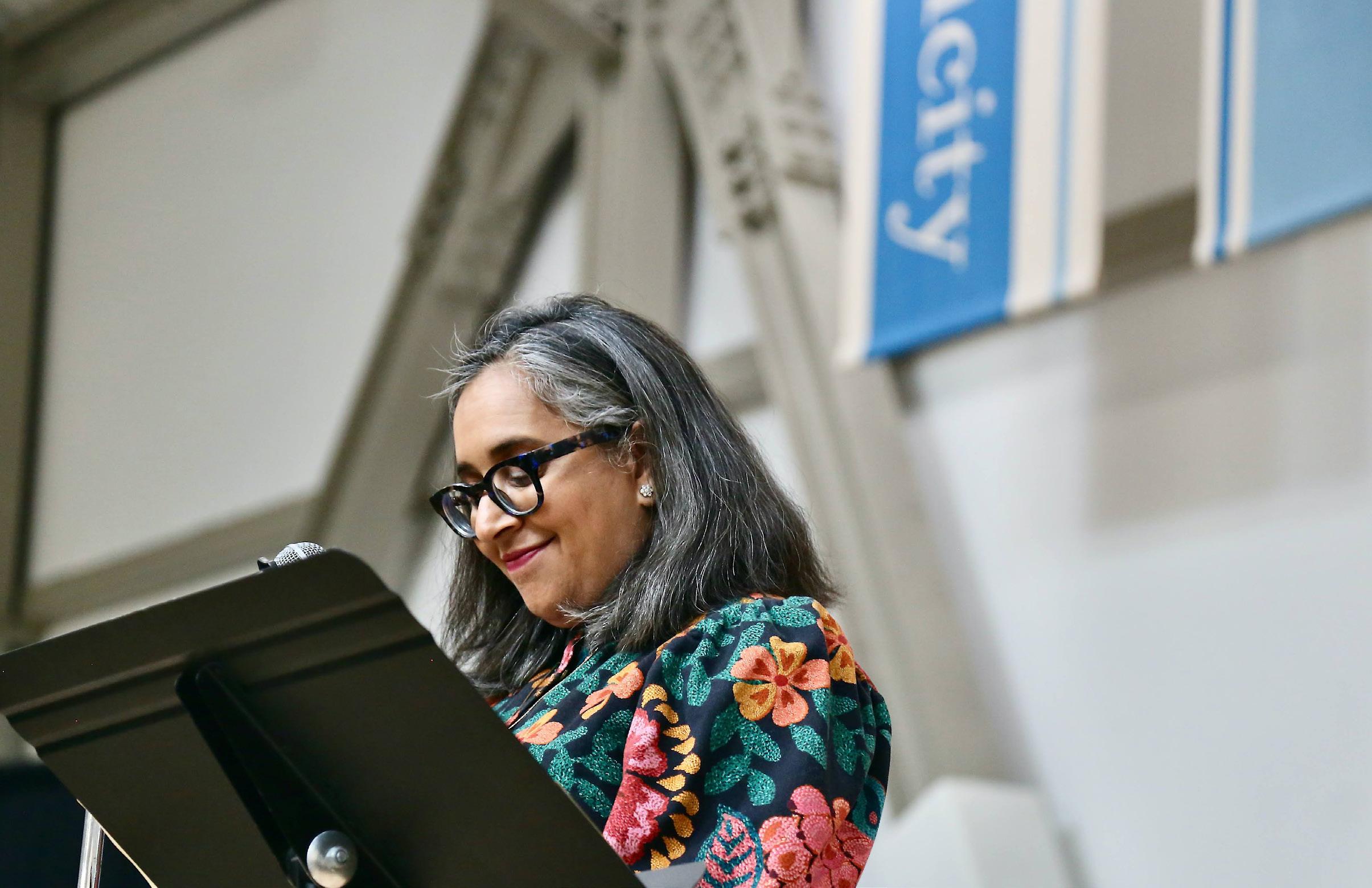
• Cloud Cuckoo Land by Anthony Doerr
• Where the Sidewalk Ends by Shel Silverstein
• A More Just Future by Dolly Chugh
• Leading with Dignity by Donna Hicks
• Breath: The New Science of a Lost Art by James Nestor
• Whereabouts by Jhumpa Lahiri
• Urban Trails: San Francisco: Coastal Bluffs, The Presidio, Hilltop Parks, & Stairways by Alexandra Kenin
page 3
connections
In each issue of Among Friends, we pose a question to our community, and print as many responses as we can fit!
THIS ISSUE’S QUESTION: What is your favorite part of our historic campus?
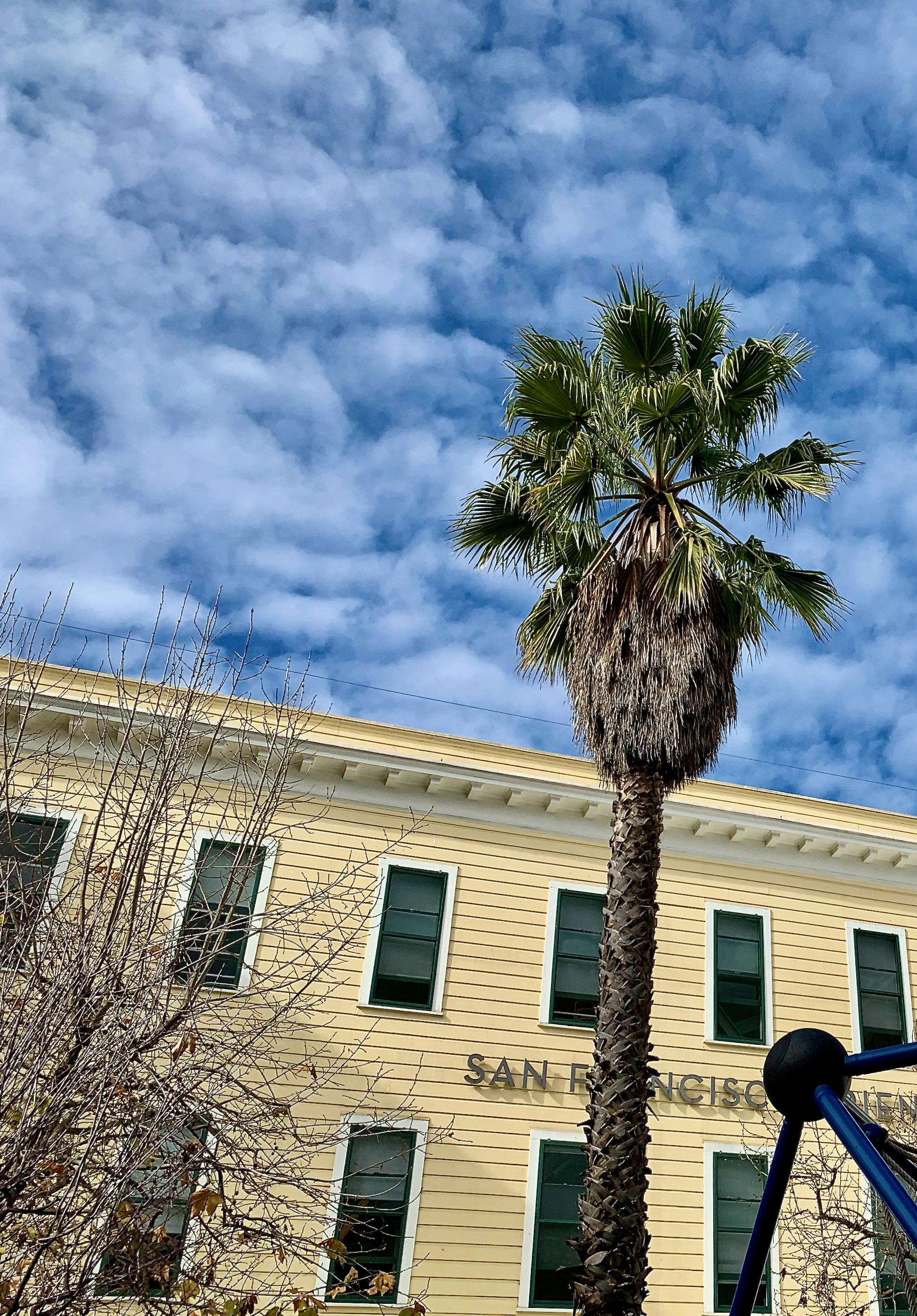
The floors. Why? This factory-to-school conversion brings back many memories... My grandmother was a seamstress for Levi Strauss, and I remember spending time there as a little girl.
– Ivy Tom, Current & Alumni Parent
Admittedly I have not spent all that much time on campus with our slow COVID start. But the library is definitely magic. The combination of light-filled windows, endless and varied books, and cozy nooks instantly fills me with a sense of calm and wonder.
– Lindy Caldwell, Current Parent
My favorite part of the “250V”—as our former Director of Development, Araxi Gundelfinger used to call it—is probably the floorboards on the second floor, as they resonate with historic stories with every scratch, dent, stain, or other mysterious markings. Take any one-foot by one-foot square of this amazing floor, and you might discover a poem or a play.
In terms of an addition that was made to the building however, I’m quite partial to our amazing Black Box theater! On several occasions, while visitors have toured our beautiful school, folks have remarked that our theater is better than the one that they had at their college. It’s a beautiful, versatile space that inspires creativity and active imagination for all our students, and often us teachers, as well. Furthermore, I love the third-floor girders and support pillars that give their idiosyncratic stamp on the south side of the room. I feel so grateful to work in such a great drama space.
– Jon Burnett, Grades 3–8 Drama Teacher
among friends: winter 2023
There is a lot of Levi’s history at 250 Valencia. At Grandfriends Day today, I met Mimi Haas who was married to the late Peter Haas, and we had a nice talk about what it used to be like. I told her about my dad, Michael, who worked there as a menswear designer, and later when I got to introduce them, they were so happy to make a connection through their shared past and with their grandchildren’s future at SFFS now. I personally love that our community has members who were here at 250 Valencia before our children and now are back here again with them.
– Ingrid Oliver, Current Paren
My favorite place on the SFFS campus is the protected outdoor kindergarten patio. It’s such a magical place in the mornings where kindergartners gather before school starts.
– Adam Berman, Current Parent and PA Co-Clerk
The Meeting Room is a very special place for me. It’s both the physical center of the school (tucked between the 1st and 3rd floors, surrounded by classrooms) but also the spiritual center of the school filled with so much natural light. I’ve experienced joy, tears, hope, connection, pain, motivation, awe, and calm in that room throughout my time here at Friends.
Another lesser known spot that I love to point out is in the Library. As you enter the space, I always have folks stop and look down at the old wooden floorboards. If you look closely you’ll see an actual rivet or two from the old Levi’s factory days. We used to have a bunch of these throughout the building, but they’ve since been picked out or covered up. I love seeing these reminders of our history, connecting our past with our present, and thinking about all the amazing stories and people that have walked through this building over the course of its lifetime. And all the amazing stories and people that we continue to add to that journey is both humbling and inspiring.
– Guybe Slangen, Current Parent / Director of Community Engagement

My favorite part of the campus is the skylights in the Meeting Room. I treasure many memories from the past eight years under those skylights - listening to a gentle rain falling against the glass during Meeting for Worship, gazing up at the soft light in times of great sadness or gratitude, even looking down on them as my family rushes around on our way to some game or performance on the 3rd floor. There’s a quiet and peace in the light that shines down on us when we join together in the Meeting Room - a particularly vivid contrast to the boisterous noise and movement that sometimes surrounds us there. To me that light symbolizes the beautiful way that our school invites grace into each moment of our lives.
– Laurie Dewan, Current Parent and PA Co-Clerk
page 5
pankti’s first fall at valencia street
months
Friends, Head
As San Francisco Friends School’s new Head of School Pankti Sevak and her family (wife Josie Rodberg and daughters Anjali and Mira) settled into life in San Francisco this past summer after arriving from Brooklyn, they connected with other families (Anjali joined the 1st Grade at Friends, while Mira has enrolled at Pacific Primary Preschool) and got a feel for their new West Coast home, exploring the city and the different neighborhoods where they considered putting down permanent roots. Pankti was also able to connect with current parents, trustees, and members of the extended SFFS network over Four Barrel coffees and 1:1 meetings in her sunny office overlooking Brosnan Street. She also recently described bearing witness to the power and magic of the Horizons program as the summer program was in full force during her first days at Friends.
And while the summer months may have allowed Pankti a slightly more relaxed pace to adjust and connect, the arrival of students and families in the fall kicked her enthusiasm for joining this community into high gear. She has a desire to “hit the ground sprinting” as Board of Trustees Co-Clerk Rebecca Foster P’24 / ‘26 / ‘29 aptly put it, greeting families on the Front Yard on the first day, celebrating new beginnings at the Picnic with Pankti at 250 Valencia in September, taking in the magic of our learning community at the Back-to-School Nights, welcoming parents to her office for a series of intimate morning coffees (interspersed with cups of caffeine at the resurrected Coffees Under the Awning), and reminiscing about her special relationship with her own grandmother at the first in-person GrandFriends Day in three years. She also hosted a series
among friends: winter 2023 ing 2020
of evening Town Halls where she shared her initial priorities as Head and provided space for our families to ask the questions that had been on their minds. Add to that Booktopia, the Craft Fair, the return of Community Meetings for Worship in the Meeting Room, and Winter Celebration, and the fall calendar at Friends is brimming with Friends joy, spirit, and connection.
Of the experience, Pankti says, “I was so excited to join this community. My transition was a long one (almost a whole academic year), which gave me the benefit of starting on some early projects and being intimately involved in the leadership changes on the Admin Team. These opportunities gave me the chance to get to know community members and really dive in once my official tenure began. I was also really excited to move here—Josie and I have always said
For her first several
at
of School Pankti Sevak had a long list of todos, first and foremost connecting with our community at every turn possible.
that living in the Bay Area was a dream for us. So, it felt wonderful when we sent off the moving truck and boarded our flight as a family to really begin this journey after a long year of planning.
I am enjoying getting to know the geography of San Francisco, and the profound beauty in the nature and landscape here. I love going for walks and exploring. A fun recent discovery was Fairyland in Oakland! At school, the best place to find delight and enjoyment is in any classroom. I love talking with students about what they are learning—and whether I am watching the 4th Grade write their novellas or the 1st Grade working on math puzzles or the range of students who love to shelve books in the library, the joy is palpable. Gaining an appreciation for curriculum and the amazing teachers also always fills my bucket.”
Clearly, Pankti has jumped into the bustle of San Francisco Friends School whole-heartedly, embracing our community with an excitement to connect and a curiosity to learn more. From taking in the Middle School play to getting down on her hands and knees to construct a Lincoln Log cabin with the equally energized Kindergartners, her enthusiasm has helped our community transition to a slate of decidedly more in-person events and celebrations than we’ve experienced in years, as the pandemic continued to roll on and keep us in our Zoom boxes. This year has felt like a new opportunity, and we are excited to continue to grow and evolve as a community—while celebrating our history, as you’ll read on the next page—with Pankti at the helm. •



page 7
celebrating 20 years of friends: san francisco friends school turns the big 2-0.
Just over two decades ago, a dynamic veteran school administrator—Cathy Hunter, our founding head of school—joined forces with an enthusiastic group of parents to found a new school in San Francisco, one unlike any other in the city’s landscape: a Quaker Friends School, espousing progressive values and strong community ties.
On assembling that initial band of brave and creative teachers and administrators, founding faculty member Caren Andrews recalls, “The mythology goes that the school started in a box at the back
of Cathy’s car, with a horrible mobile phone, and that she would pull off to the side of the road to recruit whomever she needed to recruit.” (Caren continues to inspire our budding SFFS artists today as the Lower School art teacher.) Longtime Lower School teacher Noah Bowling recalls from those early days: “Diamond Street was wonderful and fun, and I feel like our faculty and staff and parents had such a pioneering foundation, just something that ran through us where we just kind of put all of our efforts into every day.” In conversations
about those early days of Friends, alumni remember strong values being taught—and a clear sense of joy that permeated everything, from innovative approaches to learning, to community-building, to getting creative when resources were tight, but the ideas just kept coming. That DIY spirit became a mainstay of Friends, and one that many alumni families recalled with pride. Pioneer parent Evy Pine P’11 notes the commitment and firm belief that the founding families had that this school would hold something truly special for their children: “If people had
among friends: winter 2023
It’s been an incredible—and inspired—20 years for San Francisco Friends School. This year, we are looking back at all we’ve learned and accomplished over two decades of championing progressive K–8 Quaker education in the Bay Area.
signed up their kid [in those firsts years], they really believed in the power of the experiment.”
From the start, the connection between students and adults on campus was also key to the Friends experience, and markedly different from the more traditional roles observed at peer schools. Says Mauricio Mendez of the Class of 2012: “I had really in-depth conversations with the staff. And that’s something I didn’t see at all at other schools I was visiting. There were teachers who were there to teach and at Friends

This page, from top: working on the play yard at our first campus at 117 Diamond Street; the Diamond Street entrance. Next page, clockwise from top left: second Head of School Mike Hanas in Golden Gate Park; an early Friends classroom; first Lower School Head Jennifer Arnest and Middle School Head Andrew Salverda; and former teacher—now Lower School Head—Amabelle Sze at the first day of school at 250 Valencia Street.
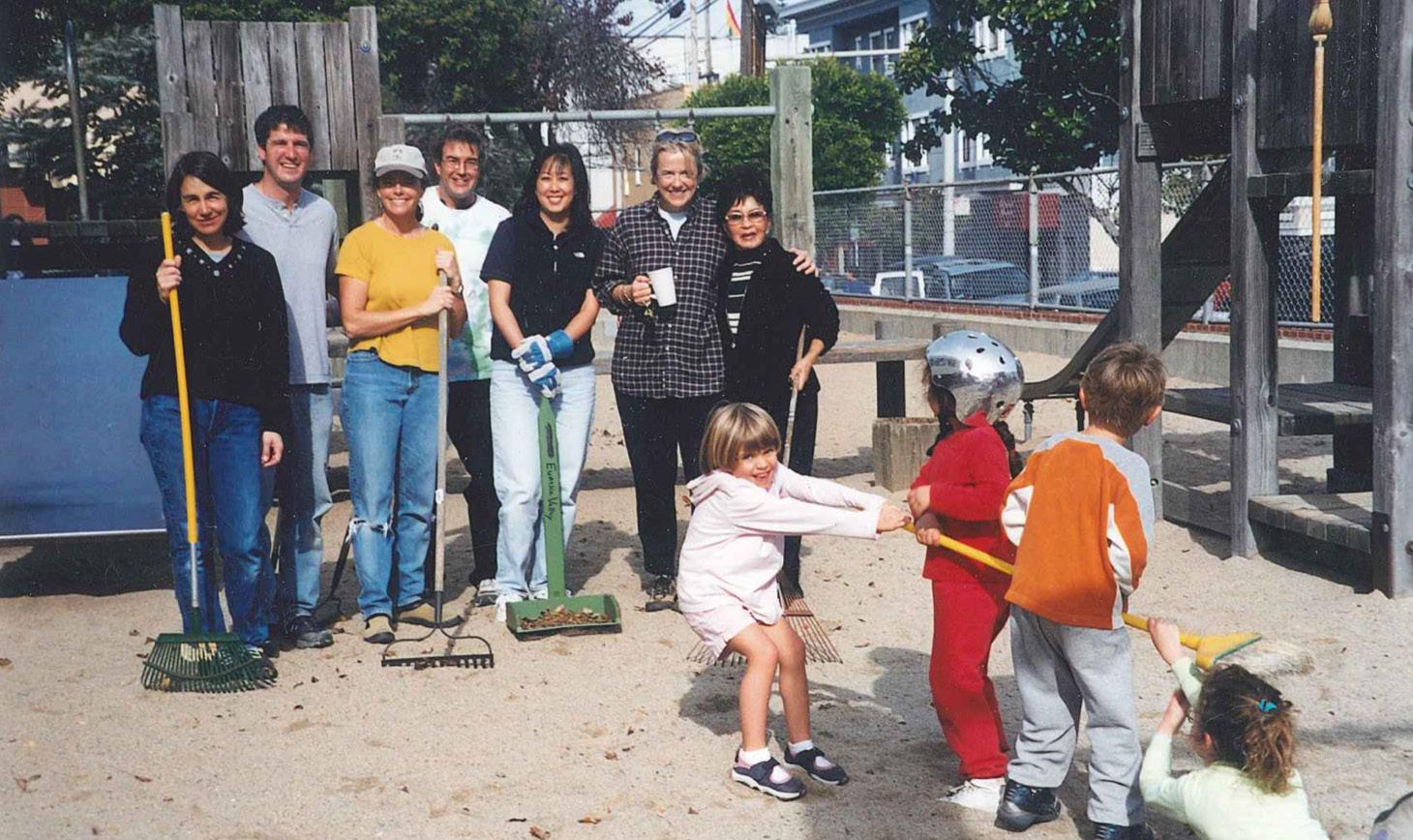
page 9
School there were grown-ups who were there to listen. And that was really cool.” Alumni parent Erin Gordon P’16 & ‘17 also felt that the teaching—and the connection with students—was among her favorite parts of her family’s Friends experience: “I thought there was a lot to love about Friends, but I would put the teachers at the top of that list.”
Early Friends parent Jenny Overstreet also felt that the innovative academic curriculum, coupled with the Quaker values that informed it, made SFFS a standout among peer schools in the city: “… The values of Friends were the best, most sensible, most sensitive way that I could think of to imbue my kids with the values

among friends: winter 2023
that are exceptionally important to me, [that I felt they would need] as citizens of the world, as citizens of their communities. It was completely natural.” This was a sentiment shared by many, including families and faculty.
“It’s always been the values,” says alumni parent Heather Jain P’18 & ‘20, “That’s what brought us to Friends, that’s what made it meaningful.”
Many SFFS alumni credit the school’s emphasis on experiential learning and intentionally building a feedback system for students that eschewed letter grades with allowing them to take deep dives into subjects that they were passioante about and take risks for the sake of truly understand-


ing a concept or subject. “Friends School predisposed me to not care about the grades so much and to care more about the integrity of the work I was putting in—as opposed to just getting a number,” says Lane Unsworth, a member of the pioneer Class of 2011. Fellow pioneer Claire Fry ‘11 also appreciated this freedom and equity in learning opportunities: “I think the values of Friends and the commitment [the school had] to letting us explore what we were passionate about [allowed us to see] what our strengths were—and also forced us to take a step back and let other people have space. It was so equitable and there was an emphasis on the idea that even if you are the best at this thing, we’re gonna let someone else do it

now—because we want them to have the experience, too.”
Erin Gordon found that the impact on her children started from their first year at Friends: “It’s the whole narrow and deep [philosophy]... at Friends, education is not scattershot; they’re really teaching kids to dive in—and those kinds of things made my kids such good learners... Starting in Kindergarten, they had Morning Meeting where the kids would stand up and lead the meeting. And now my kids can talk in front of 500 people and not even blink. They’re just comfortable, because all of these things were instilled from the very beginning.”
As the years go on and our graduates get older and grow into adulthood, we hope that we can continue to cultivate a strong and powerfully connected alumni community, keeping the history of our school alive and the connections among the people who built it strong. “What astonishes me most about our graduates,” says Caren, “is that I would not willingly return to my middle school and visit. But it is incredible how often and frequently we see kids who have graduated from Friends come
back to touch base—that speaks volumes.” Noah agrees that there is something about the community that keeps it tightly interwoven and true to its roots: “I feel like it has the same ethos, that same gravitas, that same substance about the school... It must be a special place to have a completely different group of people yet still feel very much the same.”
Through our founding, purchase and renovation of our campus at 250 Valencia (which also involved a move from the original campus at Diamond Street!), growth from a school consisting of one pioneering Kindergarten class to a bustling K–8, purchase of 260 Valencia next door, transitions between three visionary heads of school, and a worldwide pandemic that necessitated a months-long switch to remote learning—the school has continued to grow and thrive.
Michael Feldman P’19 & ‘22, an alumni parent who also served as a Board co-clerk perhaps puts it best: “To be where we are in 20 years is insane—and that’s the bottom line. To be one of the best K–8s in San Francisco, virtually overnight, on strong financial
footing and with this gorgeous facility… that ain’t easy, and we did it. Obviously, a huge debt of gratitude is owed to… the starting families. They carried a lot of weight.” And with such a remarkable history, devoted community, and unique vision for K–8 education, we are looking forward to a bright future ahead. •
Please be sure to save the evening of Saturday, May 13, when our community will come together at 250 Valencia to celebrate “20 Years of Friends” in community, sharing celebration and memories. A formal invitation from the school will be forthcoming. If you are not sure whether SFFS has your updated contact information, don’t hesitate to reach out to development@sffriendsschool. org—we want to keep in touch!
We invite you to check out our digital school history timeline— with many more details and photos, including the incredible history of our historic building at 250 Valencia!, on the SFFS website at sffriendsschool.org/ about-us/20-years-of-friends •
page 11
I had really in-depth conversations with the staff. And that’s something I didn’t see at all at other schools I was visiting. There were teachers who were there to teach and at Friends
School there were grown-ups who were there to listen. And that was really cool.”
– Mauricio Mendez, Class of 2012
middle school spotlight: affinity groups
by Lizzie Rogal, Middle School Head
In one of her first initiatives at Friends, first-year Middle School Head Lizzie Rogal began working with faculty and students to reimagine our MS affinity spaces.
The Affinity Group program has been part of the Friends Middle School student experience for many years. As our community continuously strives to deepen our culture of inclusivity and belonging, affinity groups provide a safe environment for Friends who share a certain aspect of their identity to build community, fellowship, and empowerment.
The implementation of affinity groups at Friends Middle School has evolved over the years. Recently, we’ve committed to deep-
among friends: winter 2023
ening our legacy of affinity group work by creating a set time in our weekly schedule to meet, and with a commitment from all middle school educators to be part of co-creating this program.
Affinity groups are most transformative when they authentically center student voice and need. At every point in this year’s process, we have listened deeply to our students, and empowered them to guide our approach. From deciding which groups to offer, to determining plans and activi-
ties for each session, students are truly at the center of this program. Conversations about equity, justice, and inclusion have organically emerged as students determined which groups might be needed, and considered how certain groups’ needs were different from another’s.
Our students expressed a desire for more options, and for clarity about the different kinds of groups that we offer. This year, we offer groups in the following categories:
1) Affinity Groups
:
• The term affinity group is used when bringing together people who have an identifier in common, e.g. race, gender, religion, family status, etc.
• Affinity groups are for individuals who identify as members of the group and can speak to the experience of being a
member of the group from the “I” perspective.
2) Alliance Groups
:
• The term alliance group is used when bringing together people who have a common commitment to an identifier group, e.g. race, gender, religion, family status, etc.
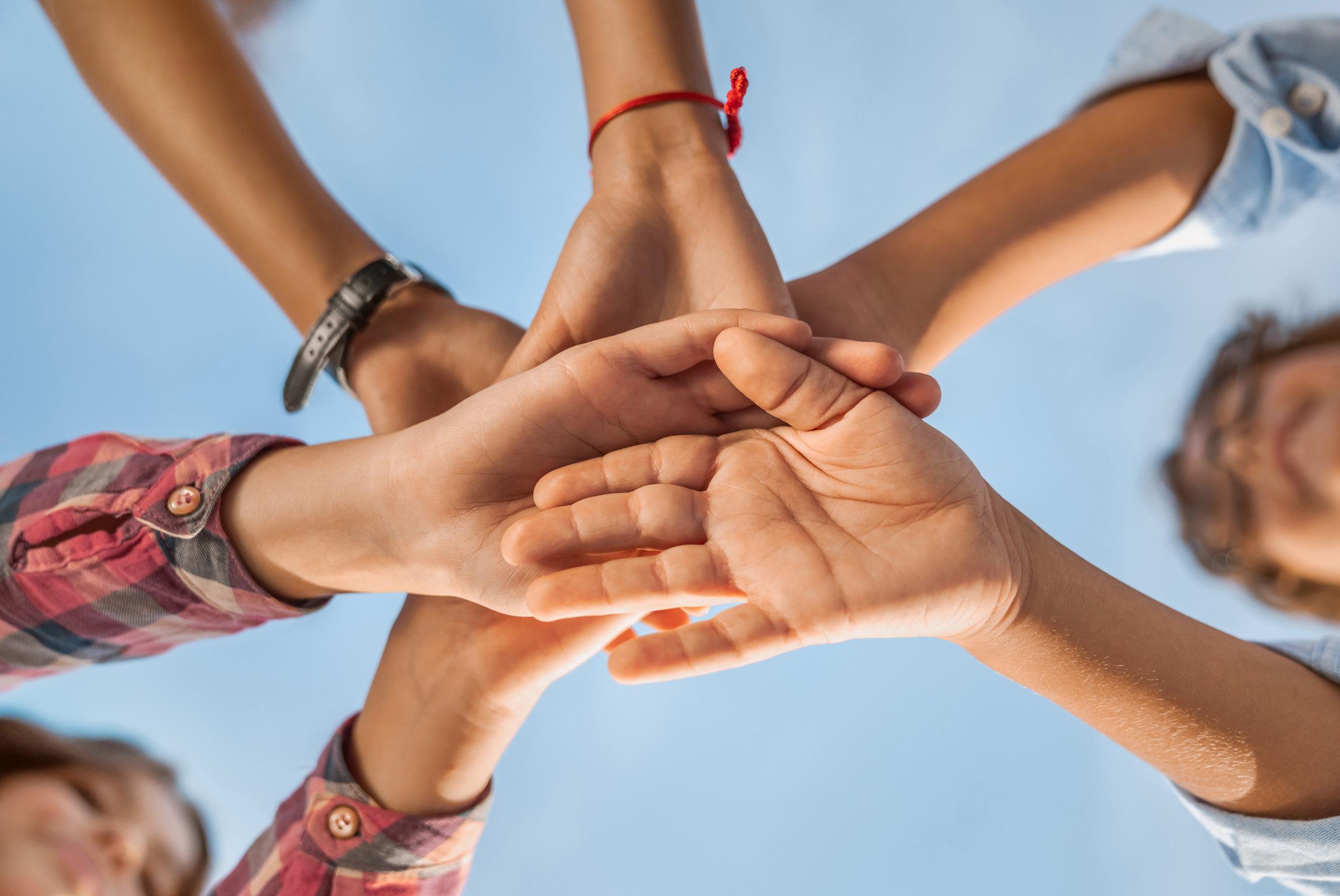
• Alliance groups are for individuals who identify as members of the group and/or as people who support and stand in solidarity with that group.
3) Justice Groups
:
• Justice groups follow similar protocols as the other groups, and are focused on a specific
page 13
“Affinity groups are most transformative when they authentically center student voice and need. At every point in this year’s process, we have listened deeply to our students, and empowered them to guide our approach.”
justice cause/topic, and oriented toward research, learning, empathy-building, and action.
• Areas of focus and engagement in a justice group are not directly related to aspects of identity (example: climate justice, food justice, etc)
Groups being offered this semester are:
• Affinity Groups: Young Black Leaders; South Asian; East Asian and Southeast Asian; Latinx; Neurodiversity; Jew Crew
• Alliance Groups: Gender Sexuality Alliance; Women and Trans People in Sports; Feminists
• Justice Groups: Peer Mediation; Climate Justice; Animal Rights; Food Justice
among friends: winter 2023
As always, work in this space is evolving – we must always be responsive to the needs of the community in the context of our evolving school culture. We are continuously seeking feedback from students and adults, and we are dedicated to being humble and light on our toes as we navigate this ongoing process and important work.
As always, we prioritize the wellbeing and connectedness of our students, and our focus and reflection about affinity groups is an example of our equity-oriented philosophy. •
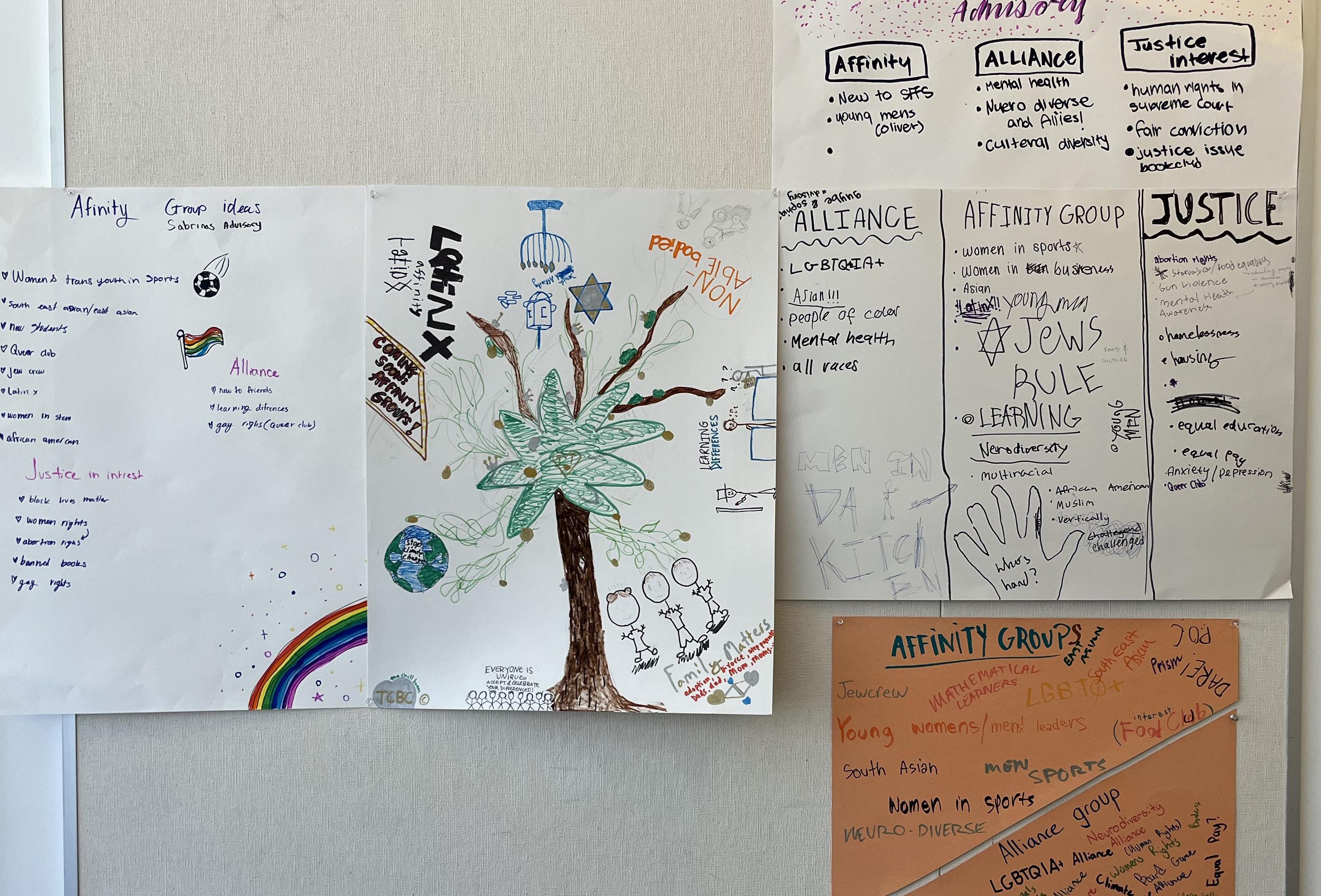
What part of the current SFFS academic program or student life would you like to learn more about? We want to hear from you, our community, so please don’t hesitate to let us know!
You can reach out to communications @sffriendsschool.org with any ideas for Among Friends profiles or stories. Thank you!
faculty voices
make it a game: math at friends
Lower School Head—and former Middle School math teacher—
Amabelle Sze encourages us to let go of our own math anxiety as we teach our kids to embrace how fun math can truly be.
This winter, we welcomed our Lower School parents back into classrooms for our annual Math Mornings. During these resurrected in-person gatherings, families heard from Lower School Head Amabelle Sze about the ways we teach math in the Lower School— and the innumerable ways math proves itself essential in our everyday lives, before going to join their students in their classrooms and throughout the hallways for engaging math games and activities.
At Friends, an essential part of our program is embracing the idea that we can use different methods to get to the same answer, and thinking of different strategies is, in fact, encouraged. “... That’s a perfect example of how we do math at Friends,” Amabelle emphasized during her remarks. “The kids are not stuck in one mode. They have lots of different strategies, depending on the information.” This is very different from the traditional approach to teaching math, in which students are encouraged to
get to the correct answer as quickly as possible. However, as Amabelle points out, kids don’t get to a deep understanding of concepts through this kind of race to the finish, and it often leaves them unsure when they encounter a similar problem next time. “We want to help cultivate powerful, innovative, curious problem-solvers versus someone who can just get to the
right answer quickly,” Amabelle emphasized.
At Friends, we also encourage group problem-solving, with students coming together with their peers ro exchange ideas and grapple with a problem that, Amabelle pointed out, “often has multiple points of entry and a high ceiling—so they can really go far

page 15
with it.” When students work with classmates who may approach a problem in a different way than they initially would, different pathways in the brain are engaged and this helps students to create deeper, more productive connections across different regions of the brain.

Explaining a recent math lesson in 2nd Grade, Amabelle pointed out: “At first students are just playing with numbers and exploring, then they begin to look for patterns, and ultimately, they’re trying to form rules. They can use these rules as conjectures to generalize their math learnings. And sometimes they even disprove their own
among friends: winter 2023
conjectures. From there, students think about their conjectures and present to the class and participate in what’s called a math congress. These are carefully curated shares to move the understanding of the group forward.”
In addition to tackling math as part of a group of curious problem-solvers, SFFS Lower-Schoolers also approach math in the form of games, which helps to encourage a love of the subject and the idea that math is actually fun. Unfortunately, many students report math anxiety in school, which can negatively impact students’ working memory, becoming a vicious cycle when approaching math. Stu-
dents often report early negative experiences with math, like timed tests, which can have a long-lasting impact.
Amabelle shares, “We play a lot of math games. Kids are not stressed out when they’re playing math games—they’re having a good time, practicing skills over and over again, they’re thinking strategically, they’re checking each other’s work, and it makes math a social activity, helping students see themselves as mathematicians. And this is how they develop number sense and fluency.
We have so many conversations with our kids about their social-emotional well-being. And we read to our kids every single night. But most of us don’t really engage in math conversations with our kids—remember to enjoy math with your child!” •

Do you know someone in the SFFS community who you think we should interview? Please let us know.
You can reach out to communications @sffriendsschool.org with any ideas for Among Friends profiles or stories.
Thank you!
SFFS families at this year’s Lower School Math Mornings.
the quaker glossary
 by Kelley Still, Communications Associate seasoning
by Kelley Still, Communications Associate seasoning
When difficult decisions must be made, it is the Quaker way to incorporate the process of “seasoning” in which decisionmaking is deferred for reflection and to allow for residual unease or discomfort to surface.
Through this thoughtful process, love and unity are preserved and the decisions made are no longer viewed as victories or defeats. With this in mind, Friends are able to move forward with joy and confidence in an inclusive, profoundly respectful community.
In the event that the final decision goes against what one initially proposes, as long as seasoning has taken place as an integral part of the process, rather
than feeling rejected or opposed, the additional time to ruminate on a particularly difficult decision eases the transition and allows one to find peace with the outcome, ensuring all considerations have been taken into account and all thoughts and stances have been respectfully acknowledged and considered.
“I love the term seasoning,” says Head of School Pankti Sevak, herself a veteran Quaker administrator. “When I learned to cook from my grandmother, she taught me how to use my senses to season a dish. Her measurements were never accurate, or measured, but instead, it was literally a little of this and a little of that. I never used a timer, but I learned to feel for a texture to note when the cooking was ‘done.’ Seasoning was an art much more than a science. Seasoning in Quaker decision
making is kind of the same. While we may have a sense of something we want to do, it’s equally important to know that these decisions are made with the community in mind. Seasoning makes our decisions better- it strengthens them. Seasoning gives us an opportunity to appreciate a problem from multiple perspectives when we remain open to listening. Seasoning sharpens the decision and can help to build confidence and understanding, especially when tensions naturally arise. Seasoning centers inclusion, participation and the collective wisdom of our community. Seasoning enables unity and assumes that we will do better work together, when we are clear on our shared purpose.” •
page 17
wondering what your kids are talking about when they come home with quaker lingo? We’re here to help!
class notes
class of 2011:
Miya Tada ‘11: Miya has been working at a culture and political education space in New York City called The People’s Forum for the past two years and organizing in Brooklyn. At TPF, she has worked on international solidarity campaigns for countries like Cuba, Haiti, and Brazil, produced a YouTube interview series on Black liberation and internationalism, and coordinated political and popular education events. She is eager to connect with others who are interested in getting involved or supporting this work! Her email is miya.t@peoplesforum.org.
class of 2012:
Madeleine Buzbee ‘12 graduated from Drew School in 2016
among friends: winter 2023
and went on to major in Studio Art at Bard College in Annandale-on-Hudson, NY, Class of 2020. During her undergraduate studies, Maddy was a two-time summer scholar at Bard College Studio Intensive in Berlin, Germany in 2017 and 2018. Since graduation, she has deepened her artistic practice in painting and experimental music through studio work. She has shown work at Southern Exposure in San Francisco, Instar Lodge in Germantown, NY, and has been a contributing curator at Hessel Museum of Art in Annandale-on-Hudson, NY. More recently, Maddy has returned to SFFS as an A3/ED Teacher for 7th- and 8th-graders. When she’s not in aftercare, you can find her DJing at a local community radio station- BFF. fm. She is overjoyed to be back


with the Friends community, and quaker values have remained a guiding principle in her artistic, professional, and personal life.
class of 2016:
Katie Cleary ‘16: Katie is in her second year at Smith College, majoring in Russian. Last summer, she spent six weeks on a study abroad program to Bishkek, Kyrgyzstan. There she lived with a host family and attended classes (Russian language and post-Soviet Eurasia). The rest of her time was filled with excursions to cultural sites in the city and to more rural locations such as Son Kul lake. Highlights included sleeping in a yurt, learning traditional crafts, horseback riding, hiking through the mountains, and the food. This was Katie’s second time in Kyrgyz-
This page (left to right): Karie Cleary in Kyrgystan and Simone Wesley. Opposite page (top to bottom): Eva Peschel, Jules Buckner back at Friends with Associate Director of Development Emma Sonduck, and Avi Katzman.
stan, a country she has fallen in love with.
Eva Peschel ‘16: I’m currently studying Anthropology focused on Climate Change & Human Solutions at UC San Diego, and loving it here! I’m planning on studying abroad in Rome from January through April 2023; where I will study Roman culture, take pasta-making classes, and hopefully be able to pick up some Italian! I loved my time at SFFS and miss it so much, so when I saw the opportunity to submit an alumni note I knew I definitely wanted to!

class of 2018:
Simone Wesley ‘18: Simone, currently a freshman at the University of Southern California, where she is majoring in Creative Writing, has been awarded the Amanda Gorman Future Poets scholarship for emerging poets of color, one of only three young poets to receive this distinguished honor. Simone’s family shared that her love of poetry was sparked in middle school at SFFS.
class of 2020:
Randall Tom ‘20: Randall shares, “I graduated from Friends in the Class of 2020 and am currently attending San Francisco University High school. During my time at University I have been selected by my peers and teachers to be on the Stewardship and Oversight Committee organization. On the board I work with fellow classmates, active teachers and parents, former UHS students and Alumni as well as the head of School. The committee meets to talk about issues in our school as we talk about diversity and inclusion in all spaces whether that’s in our classrooms in our athletic spaces or in our school mission statement. Being a Student Athlete and
Sports Captain for boy’s basketball and Flag Football being apart of this committee allows me to see the school in different mediums and perspectives.”
class of 2021:
Jules Buckner ’21: We are grateful to Jules, who came to help out Emma and the rest of the Development Office at GrandFriends Day in November—and to hang out with his brother, Elias.

class of 2022:
Avi Katzman ‘22: Avi writes in that he is currently a student at the Urban School, where he has learned to play the tenor saxophone and is now a member of the Urban jazz Band. •

Do you have news to share with your fellow SFFS alums?
Please send in a Class Note to communications @sffriendsschool.org—
we look forward to hearing from you!
page 19
photo album
among friends: winter 2023

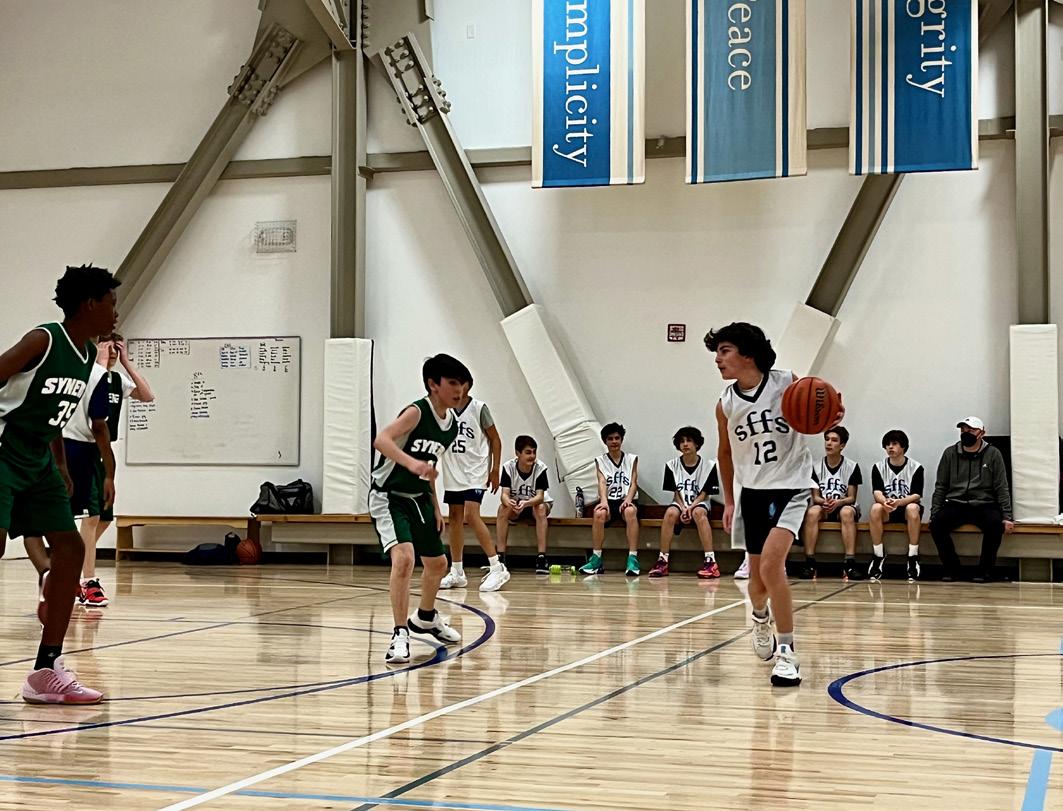

photos from the past few months at sffs that capture our theme in this issue: celebrating friends
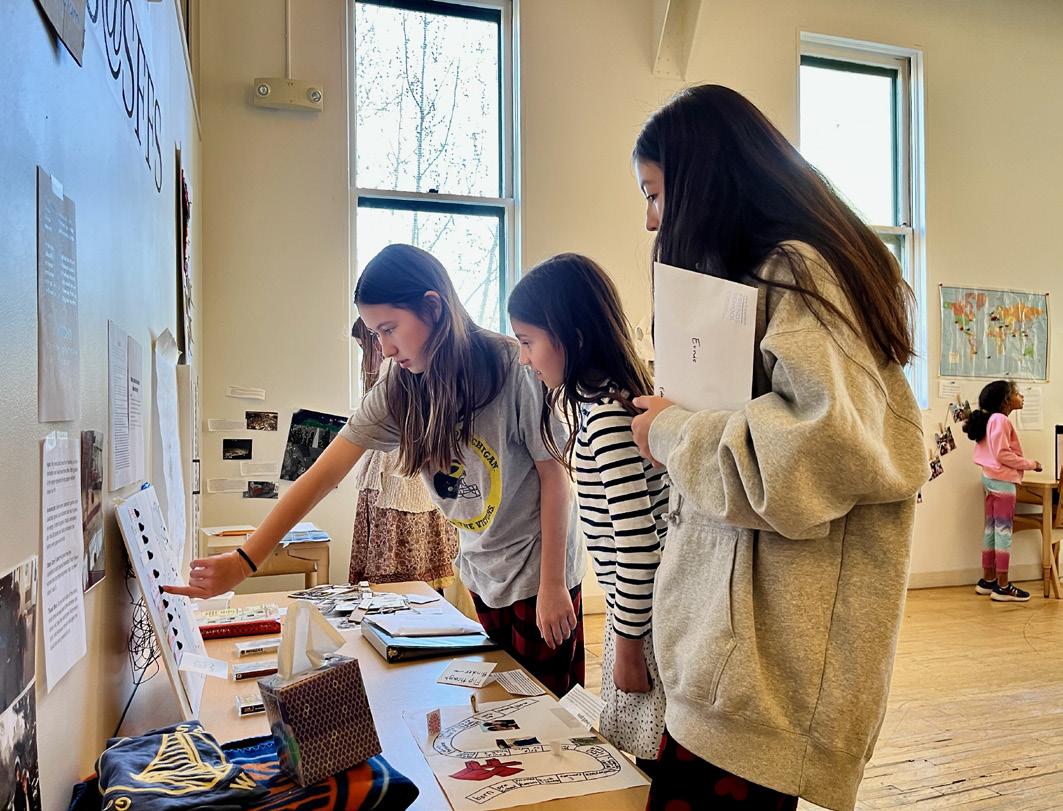
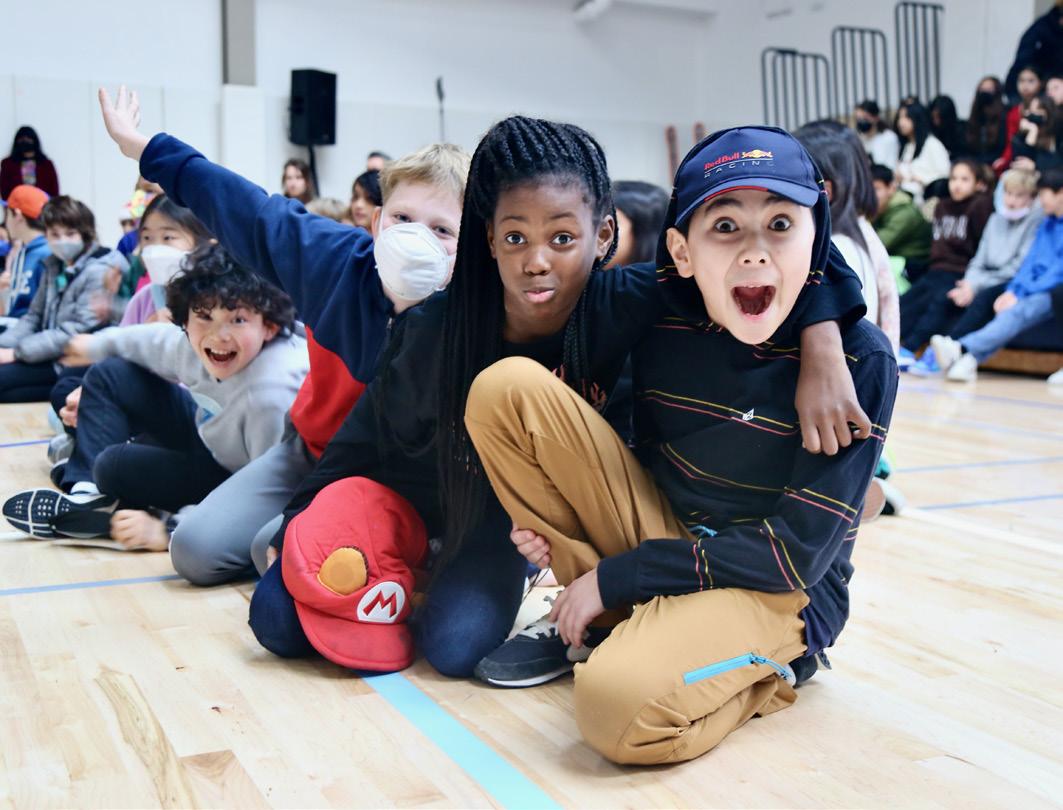
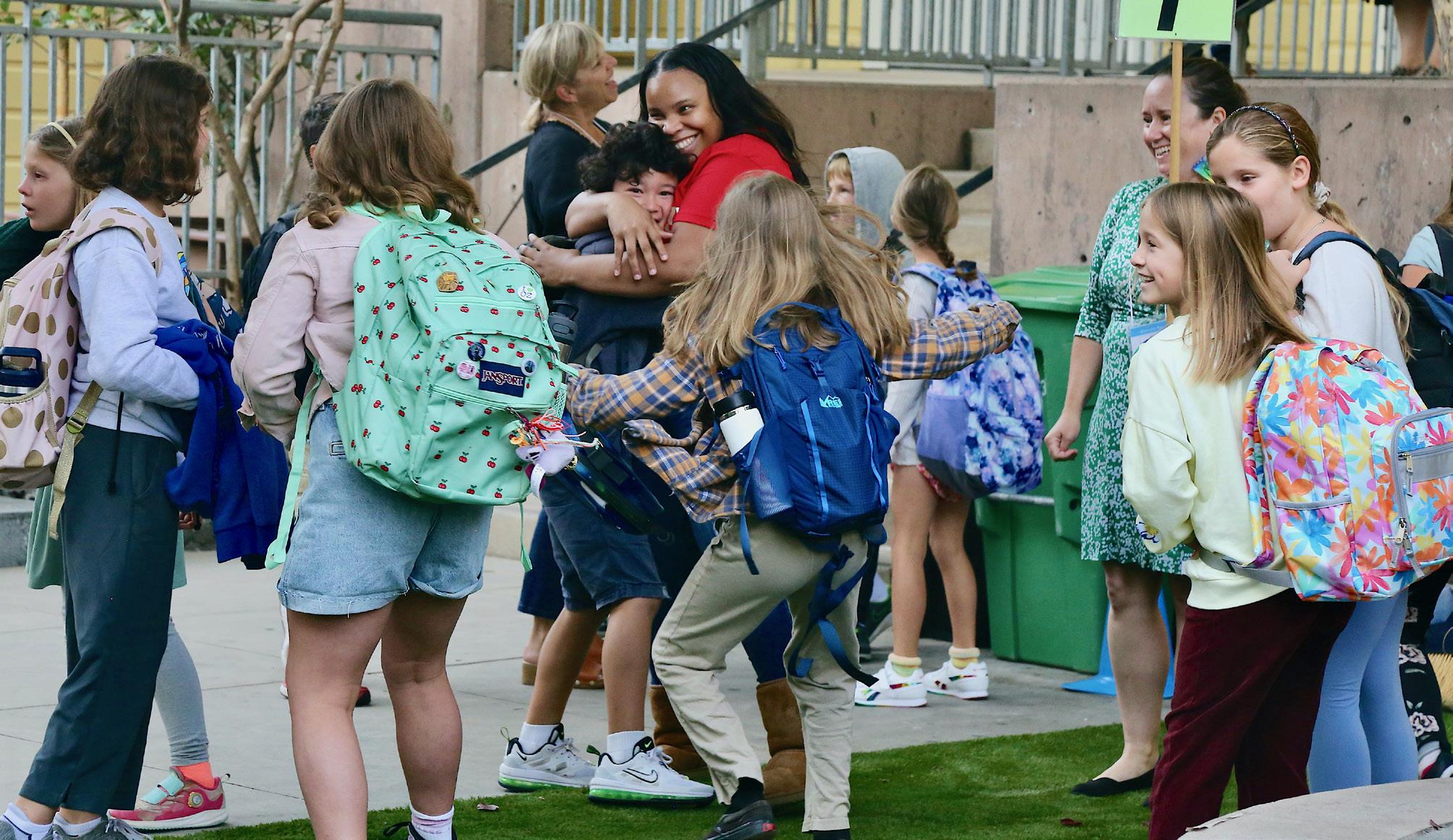
page 21
san francisco friends school 250 valencia street san francisco, ca 94103
have any questions or requests regarding among friends magazine? please contact sffs communications at communications@sffriendsschool.org.






















 by Kelley Still, Communications Associate seasoning
by Kelley Still, Communications Associate seasoning












